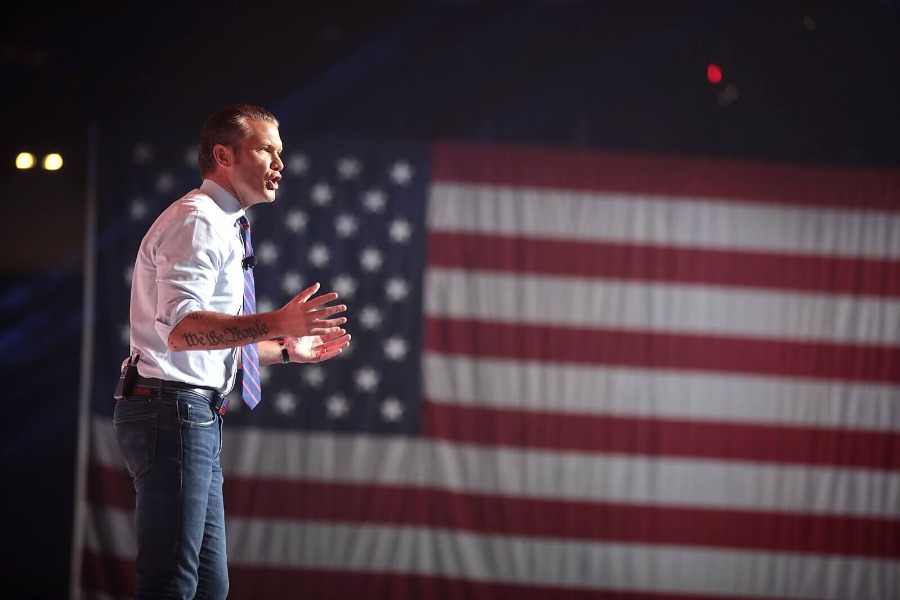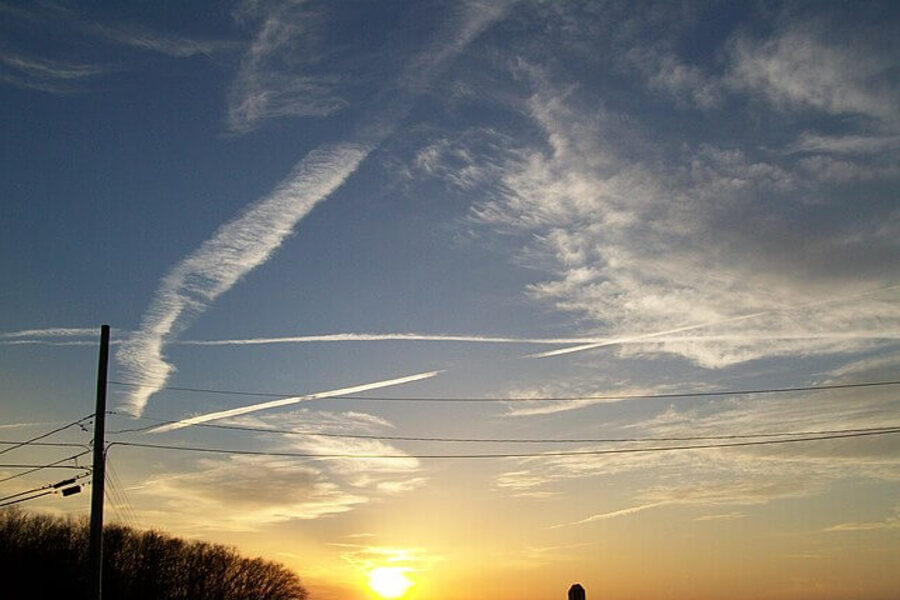Can President Trump Kill the Clean Power Plan and the Paris Agreement?
Published by The Lawfare Institute
in Cooperation With

President-elect Donald Trump has vowed that when he is inaugurated he will kill the Clean Power Plan (CPP) and pull out of the Paris Agreement—two pillars of the Obama administration's efforts to combat climate change by reducing greenhouse gas emissions. Will Trump be able to accomplish any of this? The answer is uncertain. This post explains the legal background and offers tentative answers.
The Paris Agreement
The Paris Agreement was signed on April 22, 2016 and to date has been ratified by 110 countries; the UK joined just today. The United States ratified the Agreement on September 3, 2016. The Paris Agreement was made pursuant to the broader 1992 United Nations Framework Convention on Climate Change, a treaty that the Senate consented to and the United States ratified on October 15, 1992.
Article 2 of the Paris Agreement sets global goals for mitigating the harmful effects of climate change. Among other things, it aims to keep global temperatures “well below 2 °C above pre-industrial levels and to pursue efforts to limit the temperature increase to 1.5 °C above pre-industrial levels.” However, the only legally binding obligations imposed by the Paris Agreement are that countries formulate and publish plans on how they intend to achieve reduced levels of greenhouse gas emissions.
The Paris Agreement does not create any binding obligations under international law that requires any nation to reduce greenhouse gas emissions to a particular level. Article 4.4, which contains the provision relevant to U.S. emission levels, states:
Developed country Parties should continue taking the lead by undertaking economy wide absolute emission reduction targets. Developing country Parties should continue enhancing their mitigation efforts, and are encouraged to move over time towards economy-wide emission reduction or limitation targets in the light of different national circumstances (emphasis added).
The term “should” in this Article is key. For as understood by the parties to the Agreement, the term renders this provision a legally non-binding political commitment rather than a binding obligation under international law. This core political commitment, combined with the legally binding duties to formulate and publish reduction plans, aims to create a “naming and shaming” system to encourage countries to meet their goals.
One reason why Article 4.4 took this form, rather than setting legally binding emission levels, is that legally binding emission levels would have created new international obligations that would have required congressional or senatorial approval under the U.S. Constitution. (Other nations, such as China and India, also wanted this core obligation to be non-binding, for different reasons.) The President needn’t submit a new political commitment to Congress or the Senate for its approval. But he did seek a way to ensure that U.S. emission reductions were in accord with Article 4.4 so as to induce other nations to reduce their emissions as well.
The Clean Power Plan
Obama sought to achieve these reductions through the Clean Power Plan (CPP), a notice-and-comment rule that the EPA promulgated on August 3, 2015 after years of planning. A few months later, on October 23, the EPA released the Carbon Pollution Emission Guidelines for Existing Stationary Sources. Under the Guidelines, each state has an individualized target for the total amount of greenhouse gas emissions that can be released from its power plants.
Before the drafting of the Paris Agreement concluded or the CPP was finalized, a number of states and a power company began a complex series of overlapping lawsuits against the EPA to challenge the CPP in the D.C. Court of Appeals. The first suit was filed in the summer of 2014 on the same day the notice of proposed rulemaking was published in the Federal Register. The Murray Energy Corporation claimed the proposed new rule posed a conflict with another section of the Clean Air Act. While the claim was dismissed as premature, the litigation quickly exploded from a narrow statutory issue brought by one company to a series of cases involving multiple parties and many issues. The D.C. Circuit consolidated a number of these into one case, West Virginia v. EPA, and took the unusual step of bypassing a panel and hearing the matter en banc. (This timeline provides a helpful visual breakdown of the case's history.) Even before the Court of Appeals heard arguments in the case, the Supreme Court on February 9, 2016 stayed the implementation of the EPA’s Carbon Pollution Emission Guidelines, pending the D.C. Circuit’s en banc review and potential consideration in the Supreme Court. The D.C. Circuit heard oral arguments on the legality of the stayed regulations on September 27 and has not yet issued a decision.
The petitioners raised a number of arguments as to why the CPP was invalid, including various alleged procedural defects and the contention that the CPP infringes on the police power of the States. The primary issue, however, involves § 111(d) of the Clean Air Act, which instructs the EPA to implement the “best system of emissions reduction” feasible. The challengers contended that the CPP standards were so stringent that they forced fossil fuel plants to use renewable sources of energy. The EPA, along with its own collection of states and environmental groups, defended the rule as intervenors and contended that this type of “generation-shifting” is already commonplace in regulatory systems governing the power industry.
President-Elect Trump
Enter President-elect Trump. I will set aside whether he can terminate the U.S. obligation to comply with the Paris Agreement and focus on whether he can walk away from the core non-binding political commitment to reduce emissions. If the conventional wisdom is right that Article 4.4 of the Paris Agreement is a non-binding political commitment, Trump will have no obligation under international law to meet any specific emissions targets, and the U.S. would not incur state responsibility for failing to meet such targets. But whether Trump can actually achieve his intended result of terminating the Obama administration’s broader program for regulating emissions turns on his ability to reverse the CPP under domestic law.
To kill the CPP, Trump appears to have two basic options. He can either convince a court to strike down the regulation as exceeding the EPA’s authority, or he can arrange for the EPA to rescind it through the same notice-and-comment rulemaking that Obama used to implement it.
In Court
If the case is still pending before the D.C. Circuit when Trump takes office, the administration could request that the D.C. Circuit remand the case to the EPA. Just last December, for example, the D.C. Circuit remanded a rule regarding mercury back to the agency, and last April the EPA requested that the D.C. Circuit remand a rule regarding coal combustion residuals in electric utilities. If the D.C. Circuit agreed, the EPA could then amend the regulation through notice-and-comment rulemaking—although this would take a long time and open the door to lawsuits challenging whether the EPA's withdrawal of the Clean Power Plan, and any new rule it promulgates, is a reasonable interpretation of the Clean Air Act. (More on this below.)
Challenges to EPA rules in the past have also resulted in sue-and-settle lawsuits, in which the EPA admits legal error, settles with the challengers, and undertakes a new, expedited round of notice-and-comment rulemaking. However, this process has come under criticism for giving challengers an outsized influence over the EPA’s rulemaking process. In 2015 the House passed a bill limiting sue-and-settle lawsuits, and Senator Chuck Grassley (R-IA) introduced a similar measure in the Senate. While it ultimately did not become law, congressional Republicans might not appreciate this kind of maneuver.
Of course, the D.C. Circuit does not have to remand the case and the EPA does not have to settle. Regardless of whether it resolves the case to uphold or strike down the CPP, a certiorari petition will likely follow. But if the D.C. Circuit upholds the CPP, an interesting question arises about which institution, if any, would defend the law before the Supreme Court. Recall that the Obama Administration refused to defend the Defense of Marriage Act (DOMA) in United States v. Windsor. Standing was a major issue in that case. After the Obama administration decided not to defend DOMA, a group of legislators from the House of Representatives known as the Bipartisan Legal Advisory Group (BLAG) formed to contest the issue in the Supreme Court. Although the Court ultimately reached the merits, it stated that this did “not imply that no difficulties would ensue if this were a common practice in ordinary cases.”
However, standing is likely to be less of an issue in the CPP context. As Professor Jody Freeman recently pointed out, if the Trump administration declined to defend the CPP, the most likely scenario would be for the States, municipalities, and environmental groups who are already intervenors in the case to continue to defend it. While it is up to the Court whether to grant certiorari, the concerns the Court had about BLAG are unlikely to extend to States that are the direct subject of the contested regulations.
The outcome of a case before the Supreme Court would likely depend on whether Trump has filled Justice Scalia’s seat by the time the Court considers certiorari or the merits of the case. If the Court either denies certiorari or deadlocks 4-4 on the merits, the decision of the D.C. Circuit would stand. If Trump is able to appoint a ninth justice, the Court might strike down the CPP.
In the EPA
Even if the CPP is upheld in court, or perhaps while the courts are deliberating on the matter, the EPA could, in theory, rescind or revise the rule through notice-and-comment rulemaking. The EPA—not the White House—would be conducting the rulemaking, but there are ways the President could direct or at least influence the agency to act. (See this article by Elena Kagan for a more in-depth treatment of the mechanics of what she terms “presidential administration.”) Trump might, for example, set parameters on what factors the EPA considers in its rulemaking so long as these do not violate the Clean Air Act. The D.C. Circuit allowed the Obama administration to set parameters in this manner on rulemaking regarding embryonic stem cell research in Sherley v. Sebelius, for example.
In order to rescind the CPP through a new rule, the EPA would have to claim discretion to interpret ambiguous language in the Clean Air Act differently than the Obama administration did. (Professor Freeman’s piece has some additional details on how this process might play out.) This would certainly invite legal challenges.
The Impact of CPP Repeal on the Paris Agreement
If the CPP is rescinded, either by the EPA or through the courts, it is unclear what effect this would have on the integrity of the Paris Agreement more broadly. The U.S. is the world’s second largest emitter of greenhouse gases and its participation in the Paris Agreement is a lynchpin of the Agreement's success. The participation of other signatories, notably China, was premised on the participation of the United States. If the U.S. is viewed as failing to live up to its (non-binding) obligations to reduce emissions, other countries might be less incentivized to follow through on their own commitments. Indeed, even before the end of the election, Chinese officials made a rare comment regarding a U.S. presidential candidate when they criticized Trump’s rhetoric in rejecting the Paris Agreement. Delegates to a recent international climate conference in Marrakesh recently reiterated the sentiment.
On the other hand, some commentators believe the Paris Agreement will prove resilient. Even if Trump removes the U.S. as a signatory to the Agreement, it could be years before the U.S. formally leaves, and a new administration could instantly re-ratify the Agreement. However, these potential U.S. actions would seriously undermine international efforts to reduce emissions, even assuming other nations live up to their commitments under the Agreement. At the very least, they would have a chilling effect on future efforts to achieve international cooperation.




